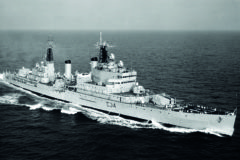Kirklees Light Railway visit
Posted by Chris Graham on 28th June 2021
David Reed visited the Kirklees Light Railway, that runs between Clayton West and Shelley in Yorkshire, and discovers an absolute gem!
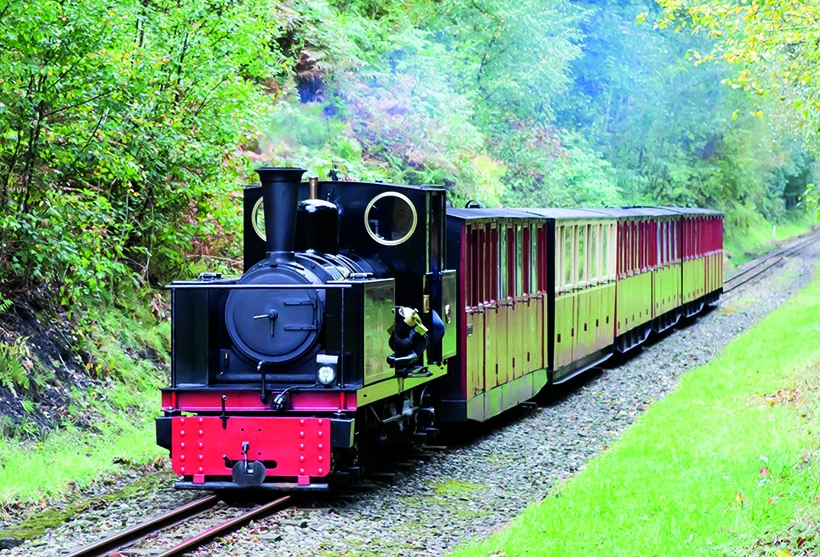
Here’s Owl taking it easy after leaving Shelley Woodhouse tunnel and descending to the stop at Skelmanthorpe station.
Situated in the heart of West Yorkshire, between the towns of Huddersfield and Wakefield, the Kirklees Light Railway transports visitors between the railway’s main station at Clayton West, to Shelley, some 3½ miles away.
The railway is built on the track bed of a branch line that was closed by British Railways to passengers in 1983, and to goods traffic a year later. The line served an area rich in coal reserves, and, with several textile mills also in the region, what the area needed was a railway. The line itself can trace its history back to 1846, when the first line through the area was proposed, although this failed to get approval by Parliament. The following 20 years saw no less than 28 proposals, but it was the rivalry between the London & North Western Railway, Midland Railway and the Lancashire & Yorkshire Railway, which saw this area as its territory, that finally got the line built.
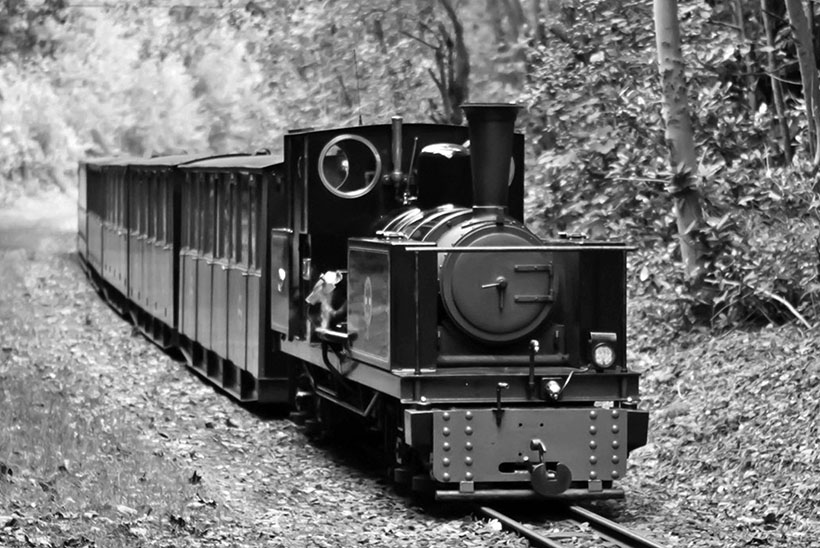
Owl is painted in the livery of the Lancashire & Yorkshire Railway, the original builders of the line which opened in 1879. Here the engine is seen heading towards Shelley Woodhouse tunnel.
This prompted the L&YR to propose an Act of Parliament which was granted in 1866, although it appears that the L&YR was somewhat slow to build the line, finally opening the branch line from Clayton West Junction to Clayton West on September 1st, 1879. The branch was built with bridges, tunnels and earthworks that were suitable for a double line to be built but, as it turned out, only a single rack was ever constructed. There were also proposals to extend the line to reach Darton on the Dewsbury-to-Barnsley line but, despite attempts to extend the railway, Clayton West was to remain as a terminus.
It was a busy line from the start, with collieries at Clayton West (Park Mill) and Skelmanthorpe (Emley Moor) to serve, which ensured that it escaped the Beeching cuts in the 1960s. And it wasn’t just regular goods and passenger trains that used the line, as it also handled excursion trains for workers to travel to places further afield. But, by 1979, the writing was on the wall.
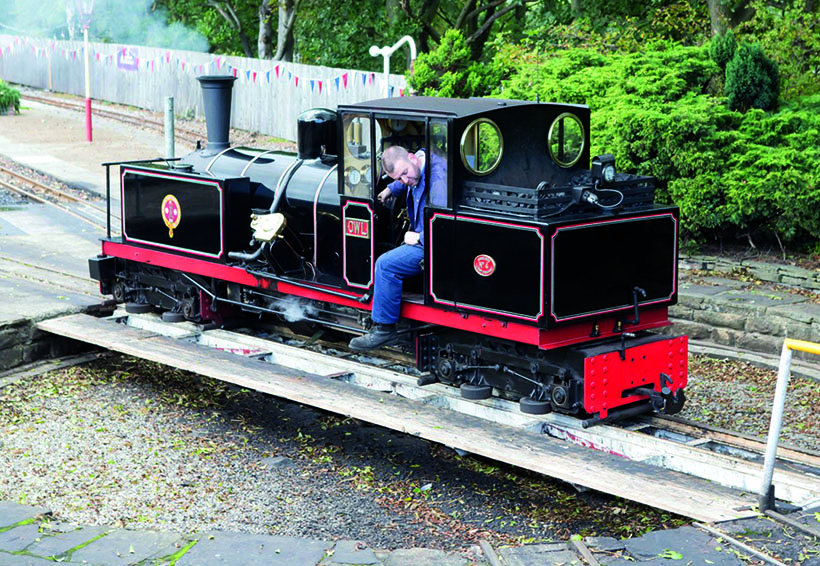
Seen on the turntable at Clayton West, Owl is about to run around its train ready for its next run to Shelley.
The revenue from coal had ceased completely and, with passenger numbers decreasing, the decision to close the line completely was taken. The final day for passengers was January 22nd, 1983, although coal continued to be transported from Emley Moor Colliery to Elland power station until 1984. By 1986, the track had been removed, although that wasn’t the end of the branch line carrying passengers; far from it, on fact. The Kirklees Light Railway was about to be born.
It was at around this time that Brian and Doreen Taylor had established a miniature railway at Shibden Park, in Halifax. It was a pretty popular attraction, but Brian was looking to develop something bigger, and was searching for a new location where he could build a railway of at least 15-inch gauge. The line to Clayton West was an obvious contender, as it had lain dormant for only a short period of time, and benefited from the amount of redundant materials that were becoming available from the local collieries that were ending their mining operations.
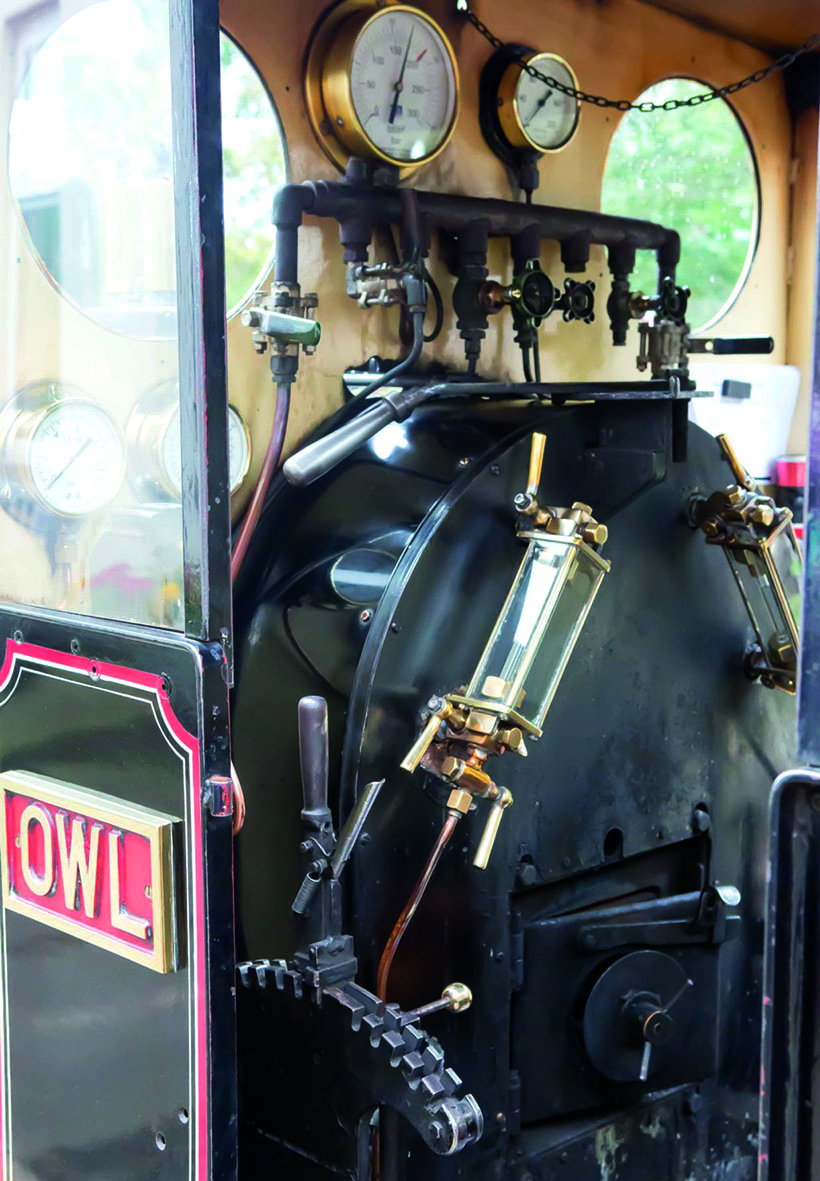
Owl’s footplate; the cab controls seem to be uncluttered.
Construction started in mid-summer 1990, following a joint application for a Light Railway Order between Kirklees Council and the Kirklees Light Railway Company, on February 22nd, 1989, with the Light Railway Order being finally granted on September 27th, 1991. Initially, though, the railway only ran to a specially constructed halt named ‘Cuckoo’s Nest,’ around a mile away from Clayton West station. The first trains ran on October 19th, 1991, with Skelmanthorpe being reached in 1992, then Shelley in 1996/7.
The line is just under 3½ miles long, with a one-way trip taking 25 minutes. Leaving Clayton West, the line starts off on a good vantage point to see the Grade II listed Emely Moor transmitter, with good panoramas of the surrounding countryside visible between the trees. After Skelmanthorpe station, where the trains cross, the line dives into a deep cutting before passing through the 511-yard long Shelley Woodhouse tunnel, which is the longest tunnel on any 15-inch gauge line in Britain.
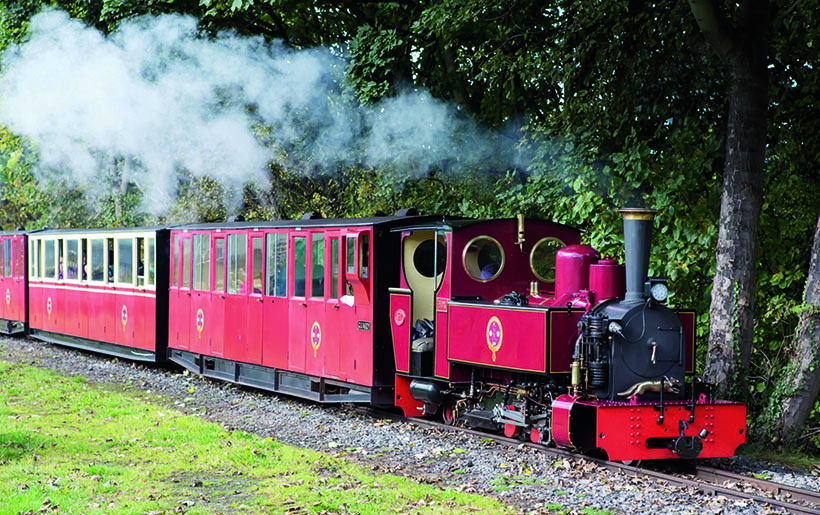
Fox is a 2-6-2T that was based on an engine built by the Hunslet Engine Company in Leeds, and destined for export. It’s seen here leaving Clayton West.
Shortly afterwards, the train terminates at Shelley station, where children’s play equipment and a tea room make up some of the facilities. Also, there’s turntable there where the engines are prepared for the return trip to Clayton West, which is a popular attraction for visitors. There isn’t much ‘bunker first’ running on this railway.
These facilities are replicated at Clayton West, the largest station on the line, which is just a few yards away from the site of the former Lancashire & Yorkshire Railway’s station. Here there is a three-road locomotive and carriage shed which was erected in time for the winter of 2000, and allows all of the railway’s locomotives and rolling stock to be housed undercover. There are also well-equipped workshops that keep the railway’s locomotives in good condition. “We do nearly everything ourselves,” operations and engineering manager, Ian Screeton, said, “That includes pattern-making, machining and fabrication, as well as having the facilities to re-tube a boiler.”
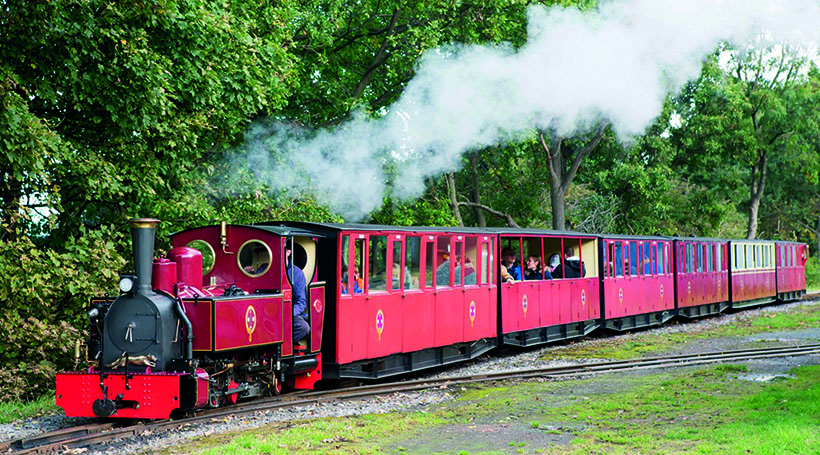
Seen powering away from Clayton West, Fox sets out with another train for Shelley.
For the visitors, there’s a tearoom, gift shop, party coach and children’s play facilities, while the Clayton Flyer is always popular. This is a ride-on 7¼in miniature railway that takes visitors on a trip around a small lake; the line having been redeveloped in 2019. The locomotive that provides the power on this line was built by Roanoke Miniature Locomotives according to its plate, and replicates Beyer Peacock British Railways Class 35 ‘Hymek’, No.7021. “It used to run at Weston-Super-Mare, and came here two years ago,” I was told.
But it’s the main line that attracts most visitors, with six engines providing the power at the present time. The locomotive fleet has also changed and expanded over the years, with the first engine built for the railway being Fox, which was constructed by Brian Taylor at his workshop at Shepley, in 1987. It’s a 2-6-2T that was based on an engine built by the Hunslet Engine Company in Leeds, which went for export.

Here’s Fox on the turntable at Clayton West, where it’ll run around its train, ready to depart for Shelley.
Fox has been the subject of a recently-finished, five-year overhaul, and was described as ‘getting some miles under its belt’ when I visited the railway. This engine is used both for passenger trains and driver experience courses, as is Badger; another engine that was built by Brian Taylor, being completed in the Clayton West workshop in 1991. Badger is a 0-6-4ST, and is similar to Kerr Stuart’s Tattoo class contractor’s locomotives which were built in large numbers and exported all over the world.
The locomotives that get the most attention, though, are undoubtedly the two articulated engines in the fleet. The largest and most powerful loco on the line is Hawk, used to pull the line’s heaviest trains. Another locomotive built by Brian Taylor, it was completed at Clayton West in 1998, and is based on a Kitson Meyer-type articulated engine built by Andrew Barclay Sons & Co in Scotland, and exported to Chile in the early years of the 20th century. Designated 0-4+4-0T, it was the first locomotive to be entirely constructed in the Clayton West Workshops.
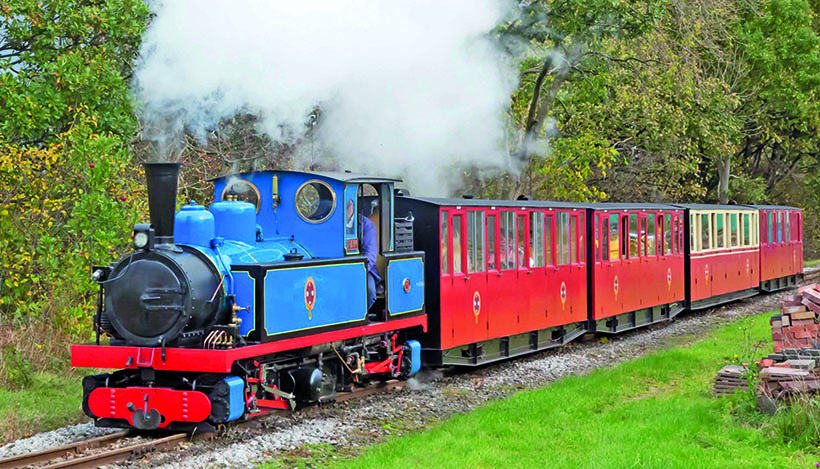
Hawk is a Kitson Meyer-type articulated engine, based on a type built by Andrew Barclay Sons & Co in Scotland, and exported to Chile in the early years of the 20th century. It’s seen here climbing away from Clayton West station.
Another articulated locomotive on the KLR is Owl, designated 0-4-0+0-4-0TG, which was built by Brian Taylor in 2000 at Clayton West. Based on an engraving of the Avonside Engine Company of Bristol’s proposed Twin Heisler locomotive, Owl is fitted with centrally-mounted cylinders arranged in a V, driving on to a crankshaft. In a nod to the line’s original builders, Owl is painted in the livery of the Lancashire & Yorkshire Railway; a nice touch.
Katie is the Kirklees Light Railway’s oldest locomotive, and was built in 1954 by Trevor Guest for the Dudley Zoo Railway, entering service there in 1956. It was built to the designs of Ernest W Twining, and is a type 2-4-2 engine. It ran on the Fairbourne Railway in Wales between 1965 and 1985. It was acquired by the KLR in 2015, after it had been restored at Windmill Farm Railway in Lancashire, with work including a new boiler that was built to modern standards.
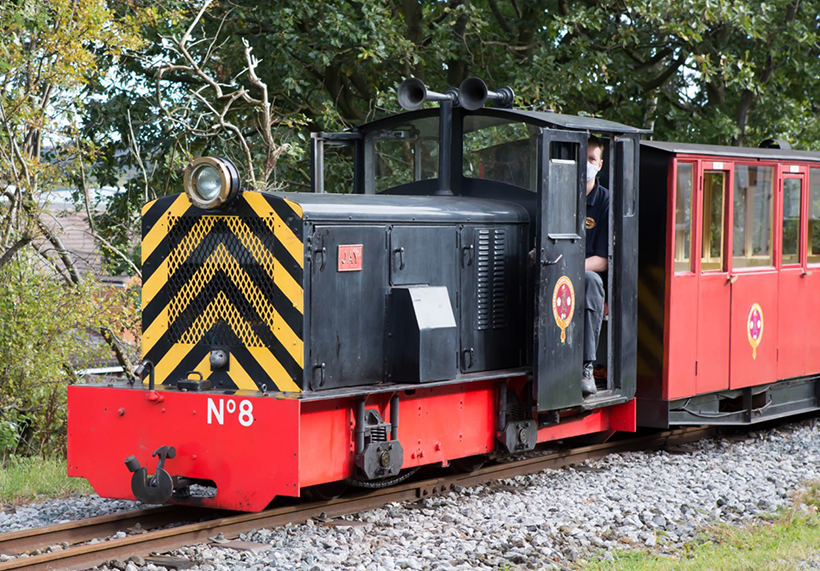
This is Jay shunting an empty train. It’s a 1992 0-4-0DH shunter that’s now powered by a Kubota four-cylinder engine.
The latest addition to the Kirklees Light Railway’s fleet is Siân, which is owned by the Siân Project Group. It’s certainly a locomotive that’s seen many changes to its appearance over the years, and has worked at a number of different railways. Siân is a 2-4-2 locomotive, designed in 1951 by Ernest W Twining and built by Guest Engineering & Maintenance Co Ltd, in Stourbridge, in 1963. Along with Katie, it ran on the Fairbourne Railway in 1964, before being re-built in an American style during the mid-1980s.
Given the name of Sydney, it was sold to Littlecote House where it remained until 1990, before passing to the Bure Valley Railway in Norfolk. Here, alterations to its appearance were again made, with the locomotive being painted maroon and getting the name, Siân. In 1994, the consortium that was eventually to become the Siân Project Group, purchased the locomotive from Bure Valley. This resulted in Siân spending 1995 to 1997 on the Cleethorpes Coast Light Railway, during which time the owners attempted to return it to the original, Twining design.
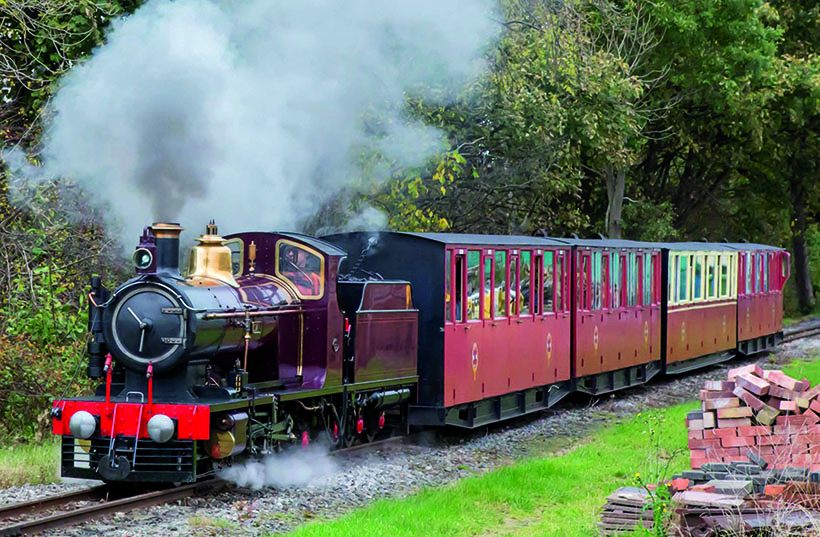
Siân has certainly seen many changes to its appearance over the years, and has worked at a number of different railways. Here it’s climbing quickly away from Clayton West.
In the early 2000s, Siân was certainly busy, hauling trains at Ravenglass, on the Romney, Hythe & Dymchurch, and on the Cleethorpes and Bure Valley railways, mainly at special events and at galas, while residing at the Windmill Farm Railway at Burscough, in Lancashire. Now a resident at Clayton West, Siân has been based at the KLR since June, 2018
And then there’s Jay, a 1992 0-4-0DH that was built around a 1947 vintage Dorman 2DL engine that had previously been used in one of the famous Hudswell Clarke replica steam outline locomotives used on the miniature railway at Blackpool Pleasure Beach. In 2002, this locomotive was rebuilt with a slightly different body outline, and the original engine was replaced by a Ford 4D four-cylinder diesel engine.
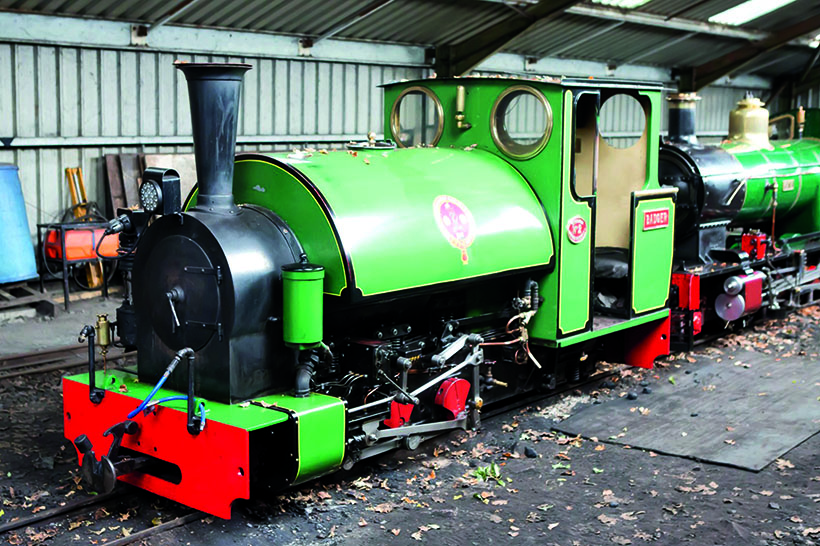
Badger, a 0-6-4ST, is another engine that was built by Brian Taylor, and is seen here in the shed at Clayton West.
Further work took place in 2008, when Jay was fitted with a new Kubota four-cylinder engine; the first new engine that it had ever had. This locomotive is described by the KLR as being one of the hardest-working engines on the line, and although it’s mainly employed on shunting duties, it does take a turn hauling passenger trains occasionally.
Also in the fleet is a Great Eastern Railway J70 tram-styled locomotive that was built in 1991. It was constructed from a 2w-2PH platelayer’s trolley, and was subsequently fitted with a steam outline body and an engine from an invalid car. That was replaced by a new Kubota diesel engine, and this engine is mainly used at special events, giving rides to children. Based at Shelley station, it’s used for track inspection work, and transports the Shelley station café staff to and from the station.
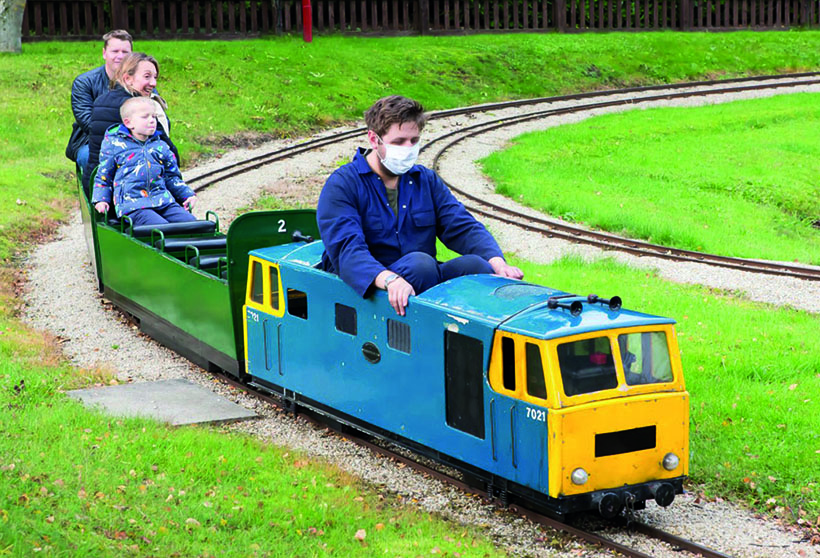
There’s a miniature railway that takes passengers for a short trip around the small lake, in front of the station.
The carriage fleet has also expanded over the years, with a range of open and closed vehicles being available, all of which are thoroughly cleaned between trips.
There’s certainly a lot to see at the KLR, whether as a family on a day out, or as an enthusiast enjoying the spectacle of live steam. For the latter, the annual steam gala is a must. And, of-course, there are the usual themed events, such as Thomas, Halloween and Santa Specials, to attract visitors. In addition, there are driver-training courses and even wedding receptions available; you can even charter your own train!
It has to be said that the staff and volunteers on the KLR are extremely friendly, nothing seemed to be too much trouble. A visit there is definitely recommended.
For a money-saving subscription to Old Glory magazine, simply click here




